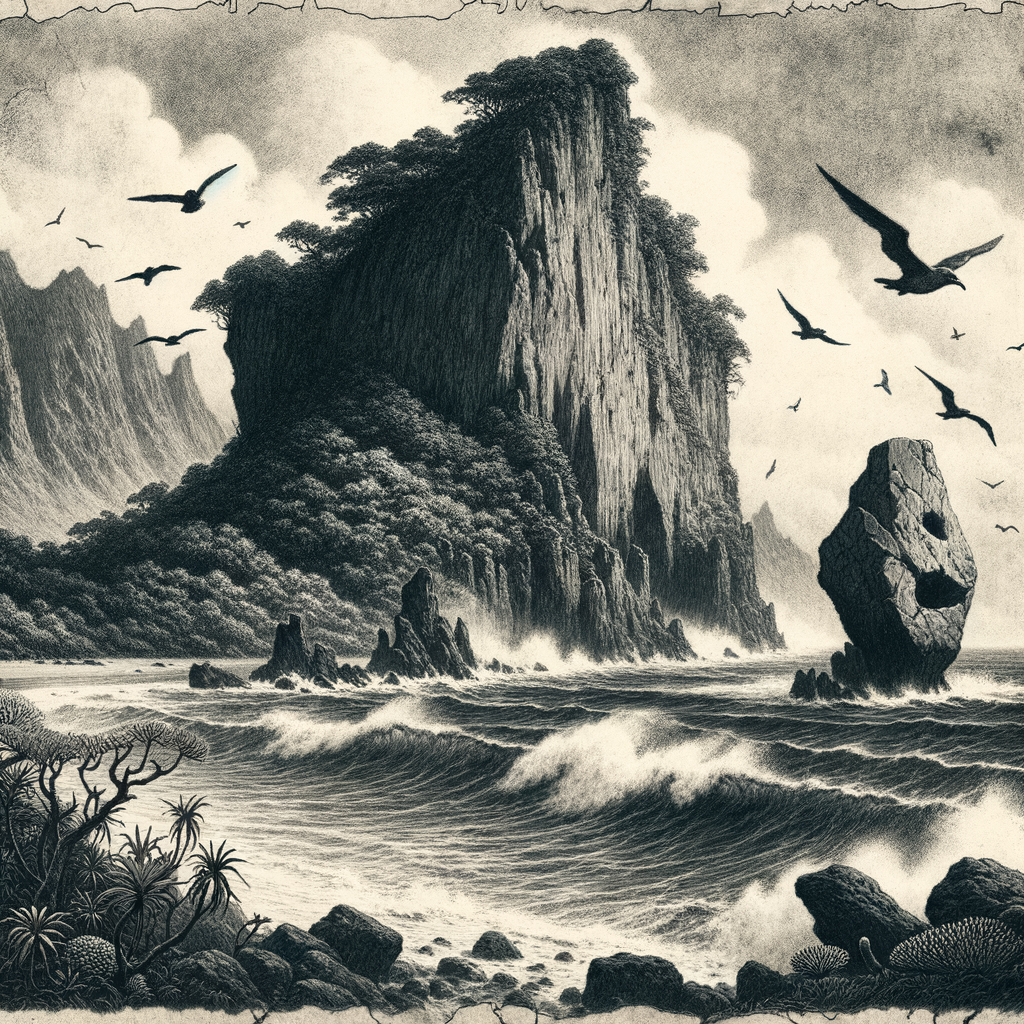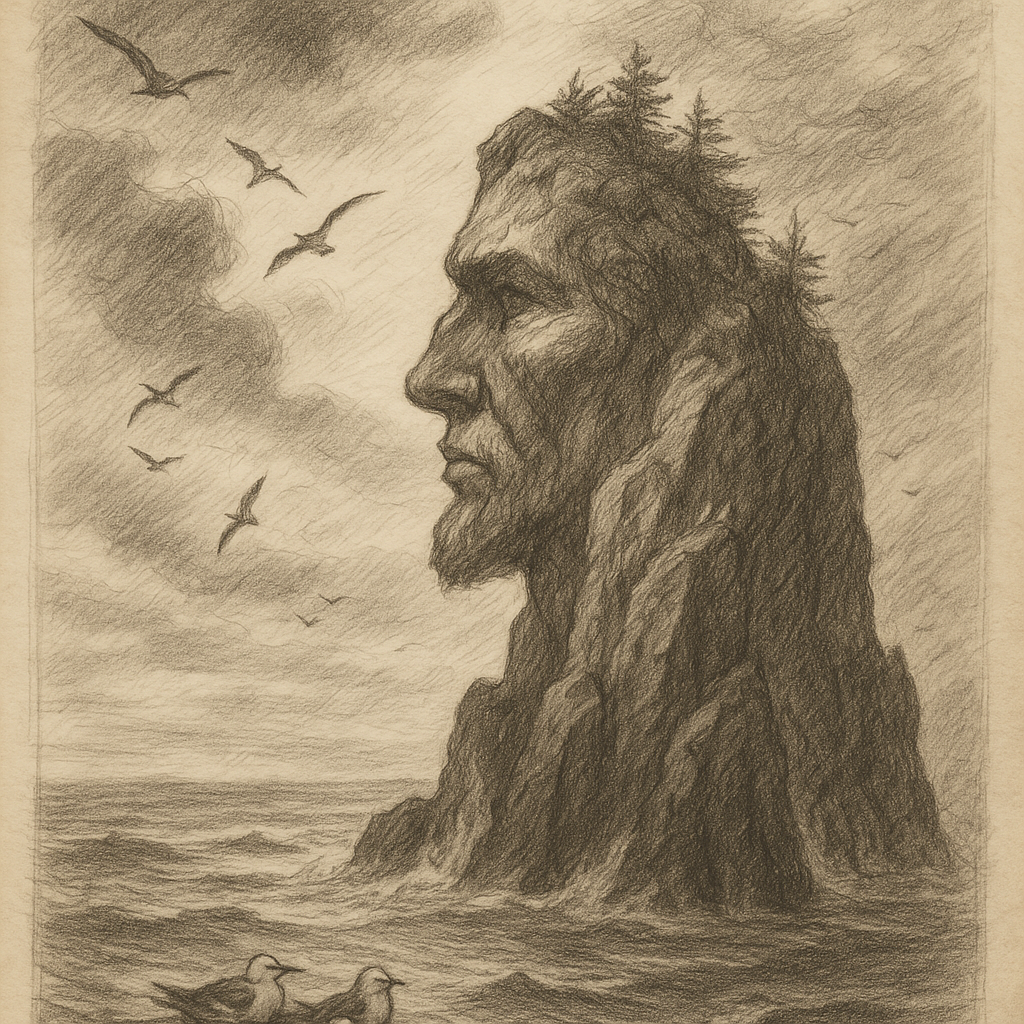Bishop Island: A Remote Gem of Untouched Wilderness
Bishop Island, a little-known sanctuary tucked away from the modern world, lies steeped in mystery and natural beauty. Located in a remote corner of the South Pacific Ocean, Bishop Island is the kind of place where time slows and nature thrives unbothered by human interference. This uninhabited island attracts the interest of scientists, adventurers, and storytellers alike.
Geography and Location
Bishop Island is situated roughly halfway between the Solomon Islands and Fiji, over 1,200 kilometers from the nearest major landmass. It lies alone on a remote ridge of undersea volcanic mountains, formed by millennia of tectonic activity. The island spans approximately 18 square kilometers, with a rugged coastline shaped by centuries of wave erosion and sporadic volcanic activity.
Characterized by a blend of black volcanic rock and verdant forest, its highest peak reaches around 430 meters above sea level. The terrain varies from steep cliffs to hidden coves and freshwater lagoons, accessible only by small boats. Bishop Island is fully encircled by coral reefs, making nautical access challenging and reinforcing its isolation from the outside world.
Geological Origin
Bishop Island owes its existence to powerful geological processes deep beneath the ocean floor. It sits on the edge of the Pacific Plate, where subduction zones have formed deep ocean trenches and given rise to volcanic island chains. Like the Kermadec Islands to the south, Bishop Island is volcanic in origin—essentially the summit of an underwater volcano that breached the ocean’s surface thousands of years ago.
Despite its volcanic roots, there have been no recorded eruptions in recent history, although minor seismic activity is occasionally detected in the region. Researchers suggest the volcano beneath the island may still be dormant rather than extinct.
Unique Biodiversity
Isolated for centuries, Bishop Island has become a sanctuary for rare and endemic species. Its ecosystem includes subtropical broadleaf forests, with trees such as bishop fig and island mahogany dominating the canopy. Understory plants include unique orchids and medicinal herbs not found elsewhere.
Birdlife flourishes on Bishop Island, with thousands of seabirds using it as a vital breeding and nesting ground. Species such as the Bishop Island petrel and silver crest tern are common, and the island has been designated an Important Bird Area (IBA) by international conservation organizations. The dense undergrowth is home to flightless rails and giant terrestrial crickets—remnants of an ancient ecosystem preserved by geographical isolation.
The surrounding coral reefs teem with marine life. Turtles, reef sharks, and schools of brightly colored fish use the protective ring of coral as a haven. Marine biologists have documented over 200 species of fish and invertebrates in the reef systems around the island, some of which are yet to be catalogued fully.
Human Interaction and Conservation
Though Bishop Island lacks a permanent human population, its untouched environment has drawn sporadic visits over the decades. Early 20th-century maritime charts marked it as merely “Bishop Rock,” though further expeditions revealed a rich, forested ecosystem of notable scientific value.
The island was briefly visited during ecological surveys in the 1980s and again in the early 2000s by conservation teams assessing its biodiversity. Each visit required special clearance due to the island’s protected status under an international conservation agreement.
Today, entry to Bishop Island is highly regulated. Permits are only granted for legitimate conservation or scientific purposes. Introduced species are nonexistent, a rarity among tropical islands, and preservationists are keen to keep it that way. Efforts focus on biosecurity and minimizing human impact to protect the delicate habitat.
Interesting Facts
– Bishop Island is occasionally referred to as “The Pacific’s Last Memory,” due to its untouched nature and the preservation of ancient ecological systems.
– The island has no artificial structures or long-term human settlements, making it one of the few remaining untouched islands in the Pacific Ocean.
– Rare solar halos and unusual weather phenomena have been observed from the island, attributed to its location within a unique atmospheric zone.
– Satellite imagery has shown bioluminescent algae blooms near the island’s shores, creating a glowing turquoise aura visible even from space during certain months of the year.
– The island was proposed as a World Heritage Site for its combination of geological and ecological significance, though official designation is still pending.
Legends and Myths
For centuries, Bishop Island has been steeped in island folklore, particularly among seafaring communities in the western Pacific. One of the most enduring legends claims that the island was once the refuge of a forgotten Polynesian king, exiled from his homeland for defying the gods of the sea. According to oral tradition, he sailed alone until a great storm drove him to the island’s shores, where he lived out his days building stone altars to appease the spirits.
Fishermen from nearby archipelagos tell of “The Singing Stone,” a mysterious formation on the island’s western cliffs that emits faint melodies when the wind blows from the southeast. Local belief holds that the stone is a guardian spirit, warning trespassers to tread lightly.
Another tale speaks of an underwater temple located just offshore, visible only during the lowest tides of the year. Divers and sonar research have yet to confirm this, but the legend persists through generations.
A Remote Sanctuary
Bishop Island represents one of Earth’s last truly wild places—an island untouched by modern development and home to ecosystems that have flourished in solitude for centuries. Its inaccessibility has preserved its habitats from the degradation seen in other island environments, allowing a glimpse into what the natural world once looked like.
While scientific ventures may occasionally set foot on its black shores, Bishop Island remains closed to tourism, ensuring that its mysteries endure intact. For those who study or simply dream of untouched nature, Bishop Island serves as an invaluable treasure, reminding us of the importance of conservation and the enduring legacy of unexplored frontiers.



